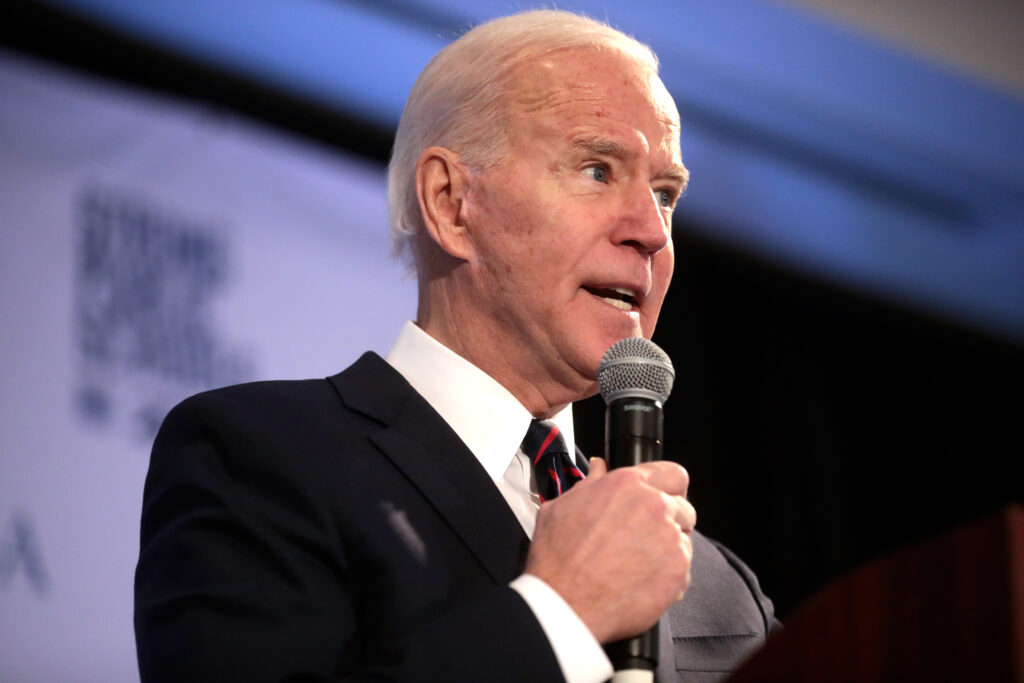Both President George W. Bush and Democrat presidential candidate Sen. John Kerry (D-Massachusetts) have offered detailed proposals to alter the nation’s health care system in significant ways, with the stated goals of expanding insurance coverage and controlling price increases. The following analysis identifies the main provisions of each candidate’s plan and analyzes their likely consequences.
SENATOR JOHN KERRY’S PROPOSALS
Kerry’s proposed health plan would provide individuals between jobs a 75 percent tax credit for health insurance payments. It would provide a refundable tax credit for up to 50 percent of coverage to small businesses and their employees to help subsidize the cost of health insurance (if they buy into the Federal Employees Health Benefits Program [FEHBP] pool, which covers some 8 million federal workers and retirees). It would provide individuals “assistance with costs above 6 percent of their income.”
In addition, to hold down insurance premiums the federal government would reimburse companies and insurers for 75 percent of the costs of catastrophic claims totaling more than $50,000, provided they pass the savings (up to $1,000 for each worker) on to their policyholders.
Discussion
Buying into the FEHBP is not an unreasonable idea, but only for individuals or small companies that have no other options–in other words, as a safety net. However, there are already more than 30 state-based high-risk pools providing safety-net coverage for those who cannot buy a policy because of a pre-existing medical condition. Proposed federal legislation would expand funding for those programs, making them more accessible. Expanding those state-based programs would build on a current, working system. Kerry’s proposal to use the government as the backup insurer for business may sound appealing, but it would cause numerous problems. The increasingly mobile U.S. workforce is already straining the employer-provided health insurance model, and the market is looking for an alternative to it. By tying the government subsidy to the current types of coverage, Kerry’s plan would make a smooth transition more difficult. Moreover, once the government opened its checkbook, it would almost certainly begin controlling the coverage.
Kerry’s proposal also could lead to additional and substantial unfunded liabilities. Medicare and Social Security, for example, already face significant future unfunded liabilities. It is important to decide whether we really want to create additional government obligations without ensuring ways to pay for them.
Encouraging Development of Disease Management Programs
Kerry’s plan calls for the federal government to work closely with patients with chronic diseases such as diabetes, cancer, asthma, and cardiovascular disease, to ensure they are getting the right medications and taking them appropriately.
Discussion
Disease management is a promising field and may be effective in improving the quality of care for patients with chronic medical conditions while controlling costs. However, many states already have adopted disease management programs, and an additional federal program is not likely to lead to widespread savings.
Cutting Administrative Costs in Half
Kerry’s plan calls for new technologies to reduce paperwork and associated costs.
Discussion
The Health Insurance Portability and Accountability Act of 1996 (HIPAA) already requires administrative simplification. However, implementation has been slow because the upfront costs are considerable and real savings aren’t realized until many years later.
Price Controls
Kerry wants the federal government to impose price controls on prescription drugs and allow individuals to import them from other countries.
Discussion
Few serious economists or politicians defend price controls–except when it comes to health care, especially prescription drugs. Price controls reduce access and quality. They are simply a top-down effort to control costs and ultimately utilization.
A much more effective way to control costs is to give patients more control over their health care dollars and let them benefit from being value-conscious consumers.
Expanding Definition of Low-Income Households
Kerry is proposing a “swap deal” with the federal government picking up the full cost (currently split between the federal and state governments) of covering nearly 20 million children enrolled in Medicaid in exchange for states covering more children (in all families up to 300 percent of the federal poverty level) and working parents (in families up to 200 percent of FPL) in the Children’s Health Insurance Program (SCHIP). Eventually under Kerry’s plan the states also would have to expand coverage to single adults and childless couples at or below the poverty level.
Discussion
This proposal appears aimed at increasing the number of people with government-provided health care and, with Kerry’s plan for employers, increasing the government’s hand in private-sector health coverage. The primary problem with such an approach is that states already have been awash in red ink because of such obligations and do not want to take on more of the financial burden.

Kerry is promising the federal government will provide some of the funds, but the states know those funds typically get cut in tight federal budget times–leaving the states holding the bag. State Medicaid programs have suffered badly from this problem. A more targeted solution to the problem Kerry’s proposal is intended to address would be to help low-income populations access private coverage, perhaps by providing them with tax credits.
Malpractice Reform
Kerry proposes to hold down malpractice premiums by requiring an impartial review of a claim before an individual can file suit and by eliminating punitive damages except in proved egregious cases. No cap on legitimate damage awards would be imposed. States would be required to make available nonbinding mediation in all cases before proceeding to trial on any claim.
Discussion
The “no cap” provision says it all.
PRESIDENT GEORGE W. BUSH’S PROPOSALS
Bush wants to expand on the recently enacted Health Savings Account (HSA) legislation, which went into effect on January 1 of this year. HSAs are tax-free personal accounts, which must be combined with (relatively inexpensive) high-deductible health insurance coverage. The Bush proposal would allow HSA purchasers to get a full tax deduction for the qualifying health insurance policy they buy. Bush also would allow workers with Flexible Spending Accounts (FSAs) to roll over up to $500 in unused funds at year’s end rather than lose it, as current law requires–thus turning FSAs, in effect, into something more like a limited HSA.
Discussion:
With his successful efforts to pass Health Savings Accounts as part of the Medicare bill, Bush has opened the door for the expansion of consumer-driven health care. It’s difficult to know for sure at this point, but HSAs may be the most important health insurance reform in decades. Any companion legislation of the sort Bush is proposing–such as the tax-deductibility of the high-deductible policy mentioned above–will encourage more workers to choose HSA plans, thereby increasing the number of people with health insurance.
Tax Credits for the Uninsured
Bush proposes to provide refundable tax credits–$1,000 per adult and $500 per child, with the total credit not to exceed $3,000 in any year–for up to 90 percent of the cost of health insurance for individuals with incomes of $30,000 or less and families with incomes of $60,000 or less.
Discussion:
The tax credit for workers who do not have access to employer-provided coverage is an appropriately targeted way to make health insurance more affordable and reduce the number of uninsured without creating new programs or expanding existing government-run health care programs. It would disproportionately help low-income workers and minorities, since they are more likely to work for employers who do not provide health insurance.
In addition, such a targeted tax credit is the most affordable way to expand coverage–about $10 billion a year under the Bush plan. The key to making the tax credit work is to ensure that people have access to affordable policies.
Perhaps most important is the issue of fairness. Currently, workers who have employer-provided coverage get a tax break for whatever the employer spends on insurance–it is not considered income. Those who work for employers who do not provide coverage get no tax break. A tax credit would level that playing field so everyone–those with employer-provided coverage, the self-employed, and workers without access to employer coverage–would get a tax break for health insurance.
Association Health Plans
Bush supports legislation that would put insurance sold through associations under federal oversight. As a result, states would not be allowed to control the policies or the practices of the associations or mandate who and what the insurance they offer would cover. However, states would monitor plans’ financial solvency and enforce consumer protections for insurers selling through associations, but not self-insured associations.
Discussion
This legislation has been around for several sessions and has little chance of passing in its current form. The most controversial provision would let associations self-insure, just as large companies do under the Employee Retirement Income Security Act (ERISA). That means associations would become their own insurers, paying health claims themselves rather than using an insurer.
The concern is that if several workers in an association became seriously ill, running up very high claims, the association could deplete its reserves and be unable to pay workers’ claims. While the idea of letting association members buy health insurance is sound–indeed, millions of Americans already get insurance through state-supervised associations–the AHP legislation raises some important issues that must be addressed.
Expanding Government Programs
Bush seeks to extend expiring and unused SCHIP funds in order to cover more children, increase funding for community health programs, provide block grants for the Medicaid program, and extend Medicaid’s Transitional Medical Assistance Program.
Discussion
The administration has made it clear it would like states to find ways to move people from Medicaid and other government programs into private health insurance. However, little has happened so far except the expansion of government programs.
Malpractice Reform
Bush wants to cap non-economic damage recovery at $250,000. His plan would reserve punitive damages to justified cases only and would limit such damage awards to what the plan’s supporters consider to be reasonable amounts. The plan would allow judgment payments to be made over time rather than as a lump sum, ensure that a statute of limitations would apply to such cases, and would reduce payment amounts if the plaintiff receives compensation from other sources for the same injury.
Discussion
Capping non-economic damages is the only serious way to get control of frivolous lawsuits and lower the cost and increase the availability of malpractice insurance. California has had such legislation in place for 30 years, and it is well-known that trial lawyers seeking to file frivolous lawsuits or game the system must look to other states to file their suits.
ANALYSIS AND CONCLUSIONS
Unlike Bill Clinton, who as a presidential candidate inspired a national debate with his sweeping health care reform plan, Kerry has proposed some measured changes intended to encourage employers to continue offering–or begin to offer–health coverage. Even so, the Kerry proposals would exacerbate the problems of the current system by redirecting it from its transition into a consumer-driven system, instead moving further toward a government-driven system.
Bush also supports relatively modest reforms, perhaps because two of his previous campaign promises–a prescription drug benefit for seniors on Medicare, and Health Savings Accounts–already have become law.
Private Sector, Public Sector, or Both?
Bush–whose plan is estimated to cost about $90 billion over 10 years–generally supports reforms that would energize the private health care system, lead to more people having access to affordable health insurance, and reduce the number of uninsured. But some of his proposals would expand government programs, which already account for about 50 cents of every health care dollar spent in the United States–and that’s before the new Medicare drug benefit goes into effect in 2006.
Kerry’s proposal–estimated at $653 billion over 10 years (down from an original estimate of more than $900 billion), which he says he can pay for by rolling back the Bush tax cuts for those making more than $200,000 a year–would, generally speaking, open the door to even more government involvement in the health care system. Part of his plan would expand heavily regulated private, employer-provided coverage under the FEHBP.
More importantly, Kerry supports eliminating the recently passed tax-deductibility of Health Savings Accounts, imposing price controls on prescription drugs, allowing citizens to import drugs from other countries to take advantage of whatever price controls are not imposed in the United States, and expanding the new Medicare legislation in ways that would make it even more expensive than it already is–and it’s already projected to cost more than half a trillion dollars over the next 10 years.
Both candidates include other components in their plans, but these are the main provisions of their proposals, and they provide a clear picture of the direction each candidate wants to take. Bush’s past success in passing HSAs and his current support for tax credits and real tort reform make his plan by far the more consumer-driven of the two.
Victoria Craig Bunce is director of research and policy, and Merrill Matthews is director, of the Council for Affordable Health Insurance. For additional information, please contact Tom Gardner ([email protected]), CAHI’s director of communications, at 703/836-6200.



